Far-Right Group Rejoices After Debate
Homepage photo credit: Southern Poverty Law Center
Support Journal-ismsFar-Right Group Rejoices After Debate
It wasn’t unanimous, but President Trump’s dog whistle to white supremacists was declared the low point of a presidential debate Tuesday that media commentators used words like “disgraceful” and “shitshow” (CNN’s Dana Bash) to describe.
“CNN commentator Van Jones said that for him, Trump’s latest refusal to denounce white supremacy was the only thing that mattered from the rancorous debate,” Christina Prignano reported for the Boston Globe.
“Number one, Donald Trump refused to condemn white supremacy. Number two: The president of the United States refused to condemn white supremacy. Number three, the commander-in-chief refused to condemn white supremacy on the global stage, in front of my children, in front of everybody’s family, and he was given the opportunity multiple times to condemn white supremacy, and he gave a wink and a nod to a racist, Nazi, murderous organization that is now celebrating online,” Jones said.

Sen. Kamala Harris of California, the Democratic vice presidential candidate, was interviewed on MSNBC. She said the term “dog whistle” was too mild. “What we saw was a dog whistle through a bullhorn. Donald Trump is not pretending to be anything other than what he is: Someone who will not condemn white supremacists.”
Eugene Robinson, the Washington Post columnist who also appeared on MSNBC, said, “This is a president running on a white supremacist platform and he needs to be challenged on it again and again” throughout the debates.
Two more presidential and one vice presidential debate are scheduled, but as Fox News reported, given what many pronounced a disaster Tuesday, some wondered aloud whether they should continue.
Maya King and Laura Barrón-López reported for Politico, “Moderator Chris Wallace gave President Donald Trump an uninterrupted opportunity to condemn the nation’s biggest domestic terrorist groups: white supremacists. Instead, Trump said they should ‘stand back and stand by.’ What’s more, he said, the violence in cities like Kenosha and Portland is a ‘left-wing problem, not a right-wing problem.’
“Trump’s comments were quickly embraced by the Proud Boys, an alt-right self-described ‘western chauvinist’ group who clearly viewed it as a call to action. The group turned his words into a logo that has been widely circulated on social media. On the right-wing social media site Parler, Proud Boys leader Joe Biggs said he took Trump’s words as a directive to ‘f— them up.’ ”
According to the Anti-Defamation League, “In reality, the group bears many of the hallmarks of a gang, and its members have taken part in multiple acts of brutal violence and intimidation. Additionally, Some Proud Boys members espouse white supremacist and anti-Semitic ideologies and/or engage with white supremacist groups.”

The Politico story also reported condemnatory comments from Ibram X. Kendi, author of “How to Be an Antiracist,” Alicia Garza, co-founder of Black Lives Matter; Rashad Robinson, president of Color of Change; Miles Taylor, a former Trump appointee who served as chief of staff to Homeland Security Secretary Kirstjen Nielsen and Jessica Byrd, an organizer with the Movement for Black Lives and leader of the Frontline project, which aims to galvanize voters ahead of the November election.
Trump’s “Proud Boys” comment was not the only so-called dog whistle.
When Wallace asked why Trump had ordered a halt to racial sensitivity training in federal agencies related to white privilege and critical race theory, the president called such training racist and said that “If you were a certain person, you had no status in life. It was sort of a reversal.”
“And if you look at the people, we were paying people hundreds of thousands of dollars to teach very bad ideas and frankly, very sick ideas,” Trump continued. “And really, they were teaching people to hate our country. And I’m not going to do that. I’m not going to allow that to happen. We have to go back to the core values of this country. They were teaching people that our country is a horrible place. It’s a racist place. And they were teaching people to hate our country. And I’m not going to allow that to happen.”
Earlier this month, the president tweeted that the U.S. Department of Education would investigate whether California schools are using The New York Times’ “1619 Project” in public school curriculum, as Kevin Liptak reported then for CNN. The Pulitzer-Prize winning collection reframes American history around the date of August 1619, when the first slave ship arrived in Virginia.
To the same question from Wallace, former vice president Joe Biden replied, “The fact is that there is racial insensitivity. People have to be made aware of what other people feel like, what insults them, what is demeaning to them. It’s important people know. Many people don’t want to hurt other people’s feelings, but it makes a big difference. It makes a gigantic difference in the way a child is able to grow up and have a sense of self-esteem.
Today is Gwen Ifill’s Brithday and I can’t help but wonder how her “mama don’t take no mess” strategy of moderating would have kept this train from veering off the track. Missing her and I know….I know …. I am not alone
— Michele Norris (@michele_norris) September 30, 2020
“It’s a little bit like how this guy and his friends look down on so many people,” Biden continued, referring to Trump. “They look down their nose on people like Irish Catholics, like me, who grow up in Scranton. They look down on people who don’t have money. They look down on people who are of a different faith. They looked down on people who are a different color. In fact, we’re all Americans. The only way we’re going to bring this country together is bring everybody together. There’s nothing we cannot do, if we do it together. We can take this on and we can defeat racism in American.”
CNN fact-checker Daniel Dale reported “an avalanche of lying” (video) from Trump as Dale double-checked statements from both contenders.
In one case, however, the fact-check came directly from the subject of Trump’s claims.
K. Rambo reported for the Oregonian in Portland, “President Donald Trump during Tuesday night’s debate said he secured the endorsement of the ‘Portland sheriff’ — presumably a reference to Multnomah County Sheriff Mike Reese.
“Reese shortly after tweeted that was false.
“In tonight’s presidential debate the President said the ‘Portland Sheriff’ supports him,” Reese said on Twitter. “As the Multnomah County Sheriff I have never supported Donald Trump and will never support him.”
Reese then quipped in a tweet he pinned, “Donald Trump has made my job a hell of a lot harder since he started talking about Portland, but I never thought he’d try to turn my wife against me!“
Donald Trump has made my job a hell of a lot harder since he started talking about Portland, but I never thought he’d try to turn my wife against me! #PortlandSheriff #Debates2020 #DebateNight
— Mike Reese (@SheriffReese) September 30, 2020
- Aya Batrawy, Associated Press: The U.S. reckoning on race, seen through other nations’ eyes
- Ali Breland, Mother Jones: The Proud Boys Are Lapping Up the President’s Instruction to “Stand By”
- Ryan Brooks and Nidhi Prakash, Buzz Feed News: The Debate Section On “Race And Violence In Our Cities” Had More Dog Whistles Than We Could Count
- Ben Collins and Brandy Zadrozny, NBC News: Proud Boys celebrate after Trump’s debate callout
- Thomas L. Friedman, New York Times: Trump Sent a Warning. Let’s Take It Seriously.
- Renee Graham, Boston Globe: This wasn’t a debate. It was a national embarrassment
- Cassie Miller, Southern Poverty Law Center: This Is the Moment the Proud Boys Have Been Waiting For (Sept. 25)
- Clarence Page, Chicago Tribune: Why I wince when I hear the words ‘white privilege’ (Sept. 15)
L.A. Times Apologizes for Racist Past
September 27, 2020
Sunday News Report Makes Attempt at Redress
- Sunday News Report Makes Attempt at Redress
Breonna ‘Could Have Been Me’:
‘Objectivity . . . Is So Whitewashed’
New Roles for Sims, Givhan, Wilson
Parks Was First Woman to Lie in Honor in Capitol
‘Race and Violence in Our Cities’ — Really?
White Share of Eligible Voters Is Dropping
More of Color Want News From Those Like Them
Nonprofit Newsrooms Lag on Inclusion
Diversity Program to Mentor H.S. Seniors
A Video Game on Plight of Journalists of Color
Exit Leaves Tenn. Station With No Black Anchors
Journalists’ Podcast Focuses on Social Justice
Short Takes
Support Journal-ismsL.A. Times Apologizes for Racist Past
Sept. 27, 2020
Credit: Los Angeles Times (video)
Sunday News Report Makes Attempt at Redress
The Los Angeles Times Sunday apologized for the paper’s history of racism and gave space to the organization’s Black, Latino and Asian American staffers to report on that history and suggest what needs to be done.
“On behalf of this institution, we apologize for The Times’ history of racism,” an editorial said after recounting examples of the newspaper’s racist practices and outlook since its 19th-century founding.
“We owe it to our readers to do better, and we vow to do so. A region as diverse and complex and fascinating as Southern California deserves a newspaper that reflects its communities. Today, 38% of the journalists on our staff are people of color. We know that is not nearly good enough, in a county that is 48% Latino and in a state where Latinos are the largest ethnic group. We know that this acknowledgment must be accompanied by a real commitment to change, a humility of spirit and an openness of mind and heart.”
The paper outlined its regrettable posture toward Japanese- and Chinese Americans, Mexican Americans and Blacks, citing “an insidious problem that has marred the work of the Los Angeles Times for much of its history: While the paper has done groundbreaking and important work highlighting the issues faced by communities of color, it has also often displayed at best a blind spot, at worst an outright hostility, for the city’s nonwhite population, one both rooted and reflected in a shortage of Indigenous, Black, Latino, Asian and other people of color in its newsroom.”
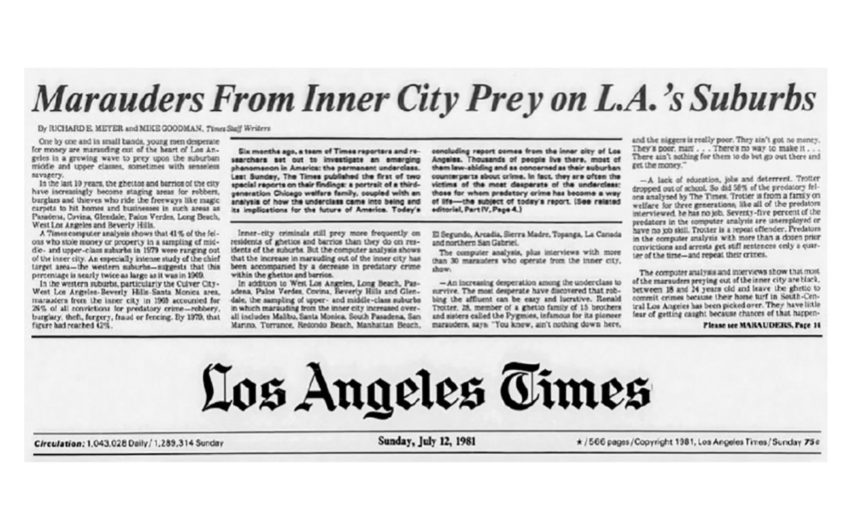
The editorial continued, “The Times will redouble and refocus its efforts to become an inclusive and inspiring voice of California — a sentinel that employs investigative and accountability reporting to help protect our fragile democracy and chronicles the stories of the Golden State, including stories that historically were neglected by the mainstream press.
“Being careful stewards of this new company, privately owned but operated for the benefit of the public, is our first obligation. But that stewardship will also require bold and decisive change. If we are to survive as a business, it will be by tapping into a digital, multicultural, multigenerational audience in a way The Times has never fully done.”
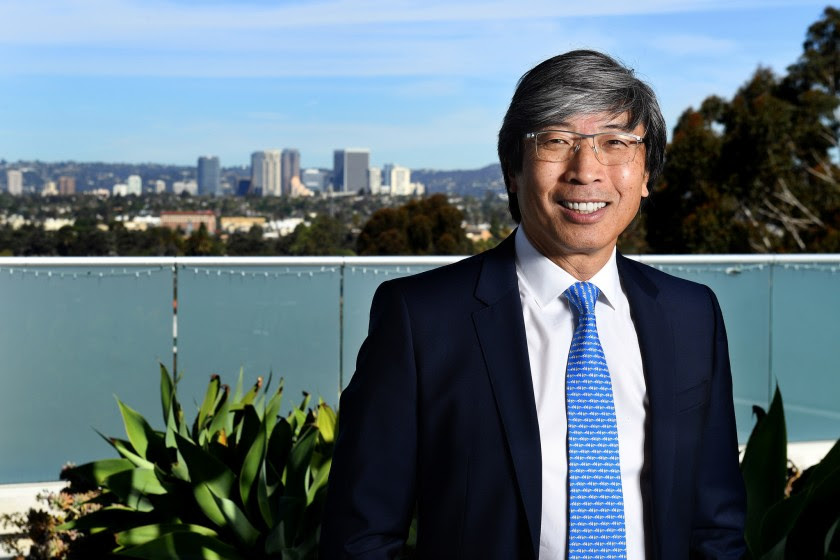 The Times’ effort is part of the national racial reckoning that followed the Memorial Day shooting of George Floyd, an African American, by Minneapolis police, but much of it is unique to that newspaper. Executive Editor Norman Pearlstine and Publisher Patrick Soon-Shiong (pictured) pledged change and responded positively to demands from the newly formed Black and Latino caucuses.
The Times’ effort is part of the national racial reckoning that followed the Memorial Day shooting of George Floyd, an African American, by Minneapolis police, but much of it is unique to that newspaper. Executive Editor Norman Pearlstine and Publisher Patrick Soon-Shiong (pictured) pledged change and responded positively to demands from the newly formed Black and Latino caucuses.
A look at the credits in Sunday’s report shows how much the effort at inclusion has affected the once nearly all-white operation, at least for this project.
“Editing by Hector Becerra, Sewell Chan, Sue Horton, Steve Padilla and Alice Short. Photo editing by Kirk McKoy. Video by Carla Hall, Robert Meeks and Mark Potts. Copy editing by Richard Nelson and Jared Servantez. Art direction by Kelli Sullivan and Allison Hong. Digital design by Courtney Lewis. Fact checking by Mariah Kreutter. Additional help by Alexa Díaz, Louisa Frahm, Samantha Melbourneweaver and Lora Victorio. Illustration by Lincoln Agnew.”
Two of the Sunday pieces were by African Americans. Columnist Sandy Banks spent more than three decades at the Times, also working as a reporter, editor, editorial writer and internship director. Her story was headlined, “Navigating the complexities of race in L.A. — and in The Times’ newsroom — as a young, Black reporter.”
Greg Braxton, who covers television for the Calendar section, wrote, “But as I look around me every day, the cultural climate of the newspaper is still troubling. I am the most senior African American journalist at The Times. But there are so few who look like me, and there is almost no one who can relate to my present and past experience. Listening to the current, impassioned testimonials and the depth of emotion from colleagues who are also disturbed about the lack of inclusion and coverage is an illustration of a dangerous cycle.”
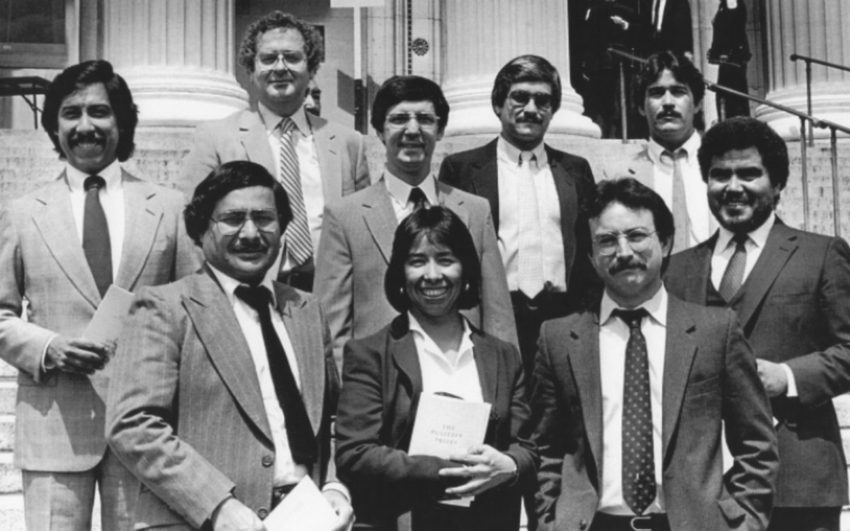
Gustavo Arellano, a relatively recent addition who had been known outside of California chiefly for his “Ask a Mexican” column, was hopeful, even as he recounted the paper’s often reprehensible treatment of Mexican Americans.
“We as a news organization must acknowledge our dark past to move forward. You as readers need to know it, to see how much we’ve improved. I remember a meeting last year between Latino leaders and masthead editors. The former blasted The Times for not covering Latino issues enough; the latter had to gently let them know that the paper had, in fact, covered some of the very issues we were accused of ignoring. It was obvious those leaders hadn’t read us in a good while.
“And we in the Latino Caucus should study our employer’s anti-Latino history, not only to ensure we never allow a repeat of those embarrassments but also to learn about how the pioneers before us pushed the paper to change.”
 Under the headline, “How do you cover a group as diverse as Asian Americans in Southern California?” Teresa Watanabe (pictured) recalled that it was only in 1979 that the newspaper hired Edwin Chen, the first Asian American reporter to join the paper’s Metro staff. “Chen, hired as a science writer in 1979, remembers being met by an editor on his first visit to the Metro newsroom with the greeting, ‘It’s Charlie Chan!’ He was stunned, he says, and kept walking amid chuckles from his new colleagues.”
Under the headline, “How do you cover a group as diverse as Asian Americans in Southern California?” Teresa Watanabe (pictured) recalled that it was only in 1979 that the newspaper hired Edwin Chen, the first Asian American reporter to join the paper’s Metro staff. “Chen, hired as a science writer in 1979, remembers being met by an editor on his first visit to the Metro newsroom with the greeting, ‘It’s Charlie Chan!’ He was stunned, he says, and kept walking amid chuckles from his new colleagues.”
“How to do better? One idea is for reporters across the paper — Asian American or not — who know and love certain communities to keep an eye on them,” Watanabe wrote. “While I cover higher education, I also do stories about Japanese Americans and Little Tokyo every now and then, because I know what’s happening in my community and people reach out to me with story ideas. Editors should give all reporters with a similar desire the time to break from their beats for the occasional cultural story.
Referring to Craig Matsuda, a longtime Times employee who left in 2008, Watanabe continued, “More broadly, however, Asian Americans and Pacific Islanders should be part of the warp and woof, as Matsuda says, of our overall coverage. The question isn’t really how to cover Asian Americans; it is how to cover Los Angeles, because we, along with other racial and ethnic communities are Los Angeles.
“The Times needs to invest in equipping all staff members with the cultural IQ and linguistic skills to understand our diverse communities. We live in one of the most diverse spots on the planet — both ethnically and religiously. Today, more than ever, our coverage needs to reflect that.”
Breonna ‘Could Have Been Me’
Support Journal-isms‘Objectivity . . . Is So Whitewashed’
“Malika Andrews has emerged as one of ESPN’s top young talents during her reporting stint in the NBA bubble and her ceiling is as high as anyone’s,” Kyle Koster reported Thursday for the Big Lead. “She struck a different tone than usual late last night during an appearance with Scott Van Pelt on SportsCenter.
”Asked how the deafening indifference of the Breonna Taylor grand jury fell on players who have made the frustrating difficult project of convincing people that black lives matter a top priority over the past few months, Andrews shared the hurt and lack of surprise permeating the bubble.
“Then, she turned personal.
” ‘I’m sorry that I’m getting choked up here because this is about the players and their response,’ she said. ‘We’ve talked before, Scott, about how my job here is to objectively cover the truth and to share what these players are going through. Today what they’re going through is that they’re hurting.
“I have prided myself in being able to be objective and cover these sorts of issues. But when it is so clear that the system of objectivity in journalism is so whitewashed and doesn’t account for the fact that when I am walking up the hill my wonderful producer Melinda reminds me that Breonna Taylor was 26 and I am 25 and that could have been me, it is very hard to continue to go to work.’
“Van Pelt was immediately supportive, encouraging Andrews to reach out to him and the larger ESPN family if she needed anything. . . .”
It was the latest example of the toll that reporting on injustice befalling other Black people can have on Black journalists.
As Jon Allsop reported for Columbia Journalism Review, on Wednesday, Daniel Cameron, Kentucky’s attorney general, called the police killing of Taylor, an emergency medical technician, in her home a “tragedy.” Then Cameron “revealed that none of the officers involved would face criminal charges for it. A grand jury in Taylor’s case did indict one of the officers, Brett Hankison, on three charges of ‘wanton endangerment’ — related not to Taylor, but to Hankison spraying bullets into a neighboring apartment. (None of the occupants of that apartment were harmed; a federal investigation into Taylor’s killing has yet to be concluded.) . . . .
”On the streets of Louisville and other cities, where protesters have massed every day for months to demand justice for Taylor, the announcement triggered a fresh outpouring of shock, sorrow, and anger. Initial coverage on MSNBC, in particular, channeled similar emotions — Joy Reid called the decision a ‘Black Lives Don’t Matter ruling’ — and chyrons and headlines accurately communicated, sometimes in pained terms, that no officers had been charged. The coverage wasn’t uniform, though. . . .
“Even before any protests got going — before Cameron’s announcement, in fact — coverage fed ominous warnings: downtown Louisville was being boarded up; the mayor had declared a ‘state of emergency’; a curfew would be enforced. These were all statements of fact — but they also adopted the narrative framing devices of law enforcement. Militaristic police tactics have become so commonplace in America that, too often, we fail to note how inappropriate they are.
“As the hours went on, I saw much less reporting — and received no push alerts — about the incidents of police aggression: officers in Louisville threatening to deploy tear gas; cops in Minneapolis and Atlanta actually deploying tear gas; an officer in Seattle rolling his bike over the head of a protester lying on the ground. In Denver, Buffalo, and, last night, LA, members of the public drove their vehicles into the crowds. . . .”
- Joyce Ferriabough Bolling, Boston Herald: Justice denied for Breonna Taylor and her family
- Danielle C. Belton, The Root: Black Journalists and Covering the Storm That Never Passes (May 29)
- Jerry Brewer, Washington Post: My Louisville home is now a heart-wrenching American tragedy
- Gene Demby, NPR “Code Switch”: How Black Reporters Report On Black Death (Aug. 20, 2015)
- Editorial, Courier Journal, Louisville, Ky: Justice for Breonna transcends grand jury. It’s time to channel anger into change
- Editorial, Kansas City Star: ‘I could end up a hashtag’: Black men in Johnson County talk routine hassles, fears
- Brian Flood, Fox News: Daily Beast columnist calls Kentucky AG Daniel Cameron an ‘Uncle Tom,’ ‘disgrace to his people’
- Claire Galofaro and Michael Kunzelman, Associated Press: Trump, social media, right-wing news stir up antifa scares
- James Goodman, The Progressive: ‘We Are Taking on Goliath’: Activists in Rochester Demand Justice for Daniel Prude
- Wesley Lowery, New York Times: A Reckoning Over Objectivity, Led by Black Journalists (June 23)
- Beth Mariam, LA Taco: Three Veteran Black Journalists Reflect on Covering Protests, From the L.A. Riots to BLM (Sept 8)
- Kelsey Minor, The Grio: Black Texas news anchor calls out racial inequality: ‘You can’t be afraid to stand on what is right’
- Ernest Owens, Daily Beast: Breonna Taylor Decision Proves the System Is Beyond Reform
- Patrice Peck, New York Times: Black Journalists Are Exhausted (May 29)
- Leonard Pitts Jr., Miami Herald: If you’re focused on Black deaths in Chicago, you’re willfully ignoring what police do to us (Sept. 15)
- Mary Ramsey, Courier Journal, Louisville, Ky.: Daily Caller reporters arrested covering Louisville protests after Breonna Taylor indictment
- Roger Reeves, The Undefeated: Black athletes were exhausted with bearing the dead on their shoulders
- Michelle Singletary, Washington Post: Yes, I was hired because I was Black. But that’s not the only reason. (Sept. 18)
- Will Sutton, NOLA.com: Breonna Taylor is gone, but her legacy may be changing the prosecutorial system
- Jenisha Watts, The Undefeated: I cried for Breonna Taylor and all the Black women in my life
New Roles for Sims, Givhan, Wilson
New roles were announced last week for veteran journalists Calvin Sims, Robin Givhan and Lisa Wilson.
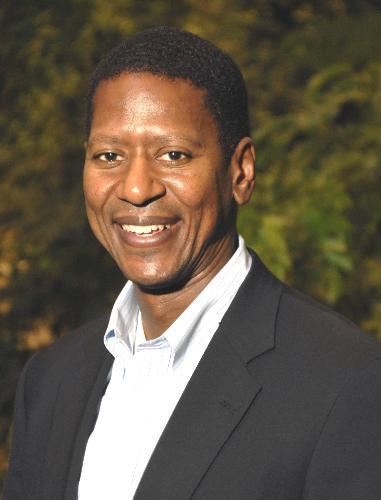 “CNN announced today that Calvin Sims (pictured) will join the network as executive vice president of Standards and Practices, reporting to Jeff Zucker, Chairman, WarnerMedia News and Sports,” the network said on Tuesday.
“CNN announced today that Calvin Sims (pictured) will join the network as executive vice president of Standards and Practices, reporting to Jeff Zucker, Chairman, WarnerMedia News and Sports,” the network said on Tuesday.
”He will begin his new role on September 30th. Sims is an accomplished media executive, with more than 30 years of experience in news, foreign affairs and philanthropy, serving in senior roles at International House, The New York Times, Discovery Times Channel, Ford Foundation and Council on Foreign Relations.
“Sims succeeds CNN’s S&P chief Rick Davis, who has announced he will retire in January 2021. They will work alongside each other in the coming months to ensure a smooth transition upon Davis’ exit at the end of January. . . .”
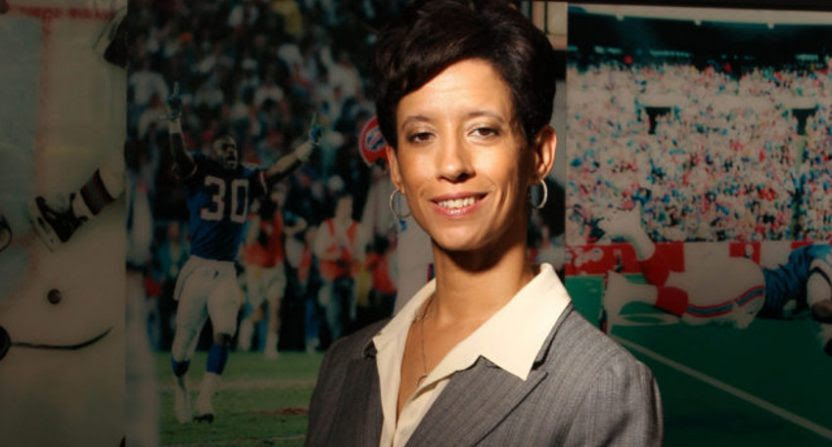 Wilson (pictured), managing editor of The Athletic’s NFL vertical and this year’s president of the Associated Press Sports Editors, was named editorial director of the subscription-only sports news service. “Lisa will play a key role on the company’s editorial leadership team and will be responsible for overseeing many facets of the company’s editorial operations, developing and iterating on overall content strategy, and partnering on various HQ departments on new growth and product initiatives,” the company announced Wednesday.
Wilson (pictured), managing editor of The Athletic’s NFL vertical and this year’s president of the Associated Press Sports Editors, was named editorial director of the subscription-only sports news service. “Lisa will play a key role on the company’s editorial leadership team and will be responsible for overseeing many facets of the company’s editorial operations, developing and iterating on overall content strategy, and partnering on various HQ departments on new growth and product initiatives,” the company announced Wednesday.
“Lisa started her career with The Athletic two years ago, joining as Managing Editor of the NFL Vertical. She was previously Senior Editor, Sports at The Undefeated and spent nearly twenty years at The Buffalo News, most recently as Executive Sports Editor. . . .”
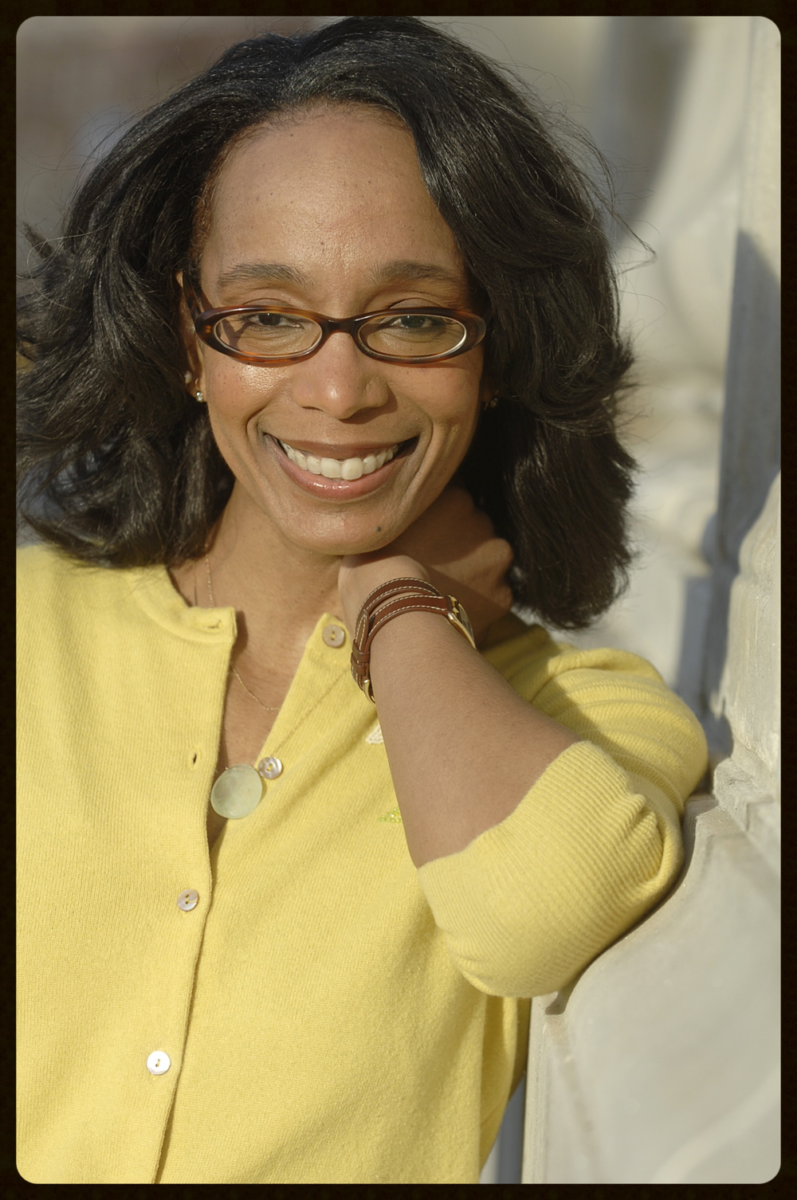 Givhan (pictured) “has been promoted to senior critic-at-large and will write about a broad range of subjects, including politics, race, business and the arts,” The Washington Post said Wednesday in an emailed announcement. “In the coming weeks, Robin will begin writing a weekly column that will be featured in the A-section of The Post’s print edition.
Givhan (pictured) “has been promoted to senior critic-at-large and will write about a broad range of subjects, including politics, race, business and the arts,” The Washington Post said Wednesday in an emailed announcement. “In the coming weeks, Robin will begin writing a weekly column that will be featured in the A-section of The Post’s print edition.
“Robin is one of the world’s most recognized critics in the realm of fashion, which she has viewed as a business, as a cultural institution and as pure pleasure.
“She will report to Krissah Thompson, who was recently named The Post’s Managing Editor for Diversity and Inclusion.” Thompson’s statement is here.
Givhan has since written two pieces as critic-at-large, “Miss Breonna Taylor” and “Notorious ACB? No and no. Trump’s nominee is no RBG.”
- Daily Memphian: Denisha Thomas named Local 24 news director
- New York Times: Opinion’s New Politics Editor [Ezekiel Kweku of New York magazine] (Sept. 9)
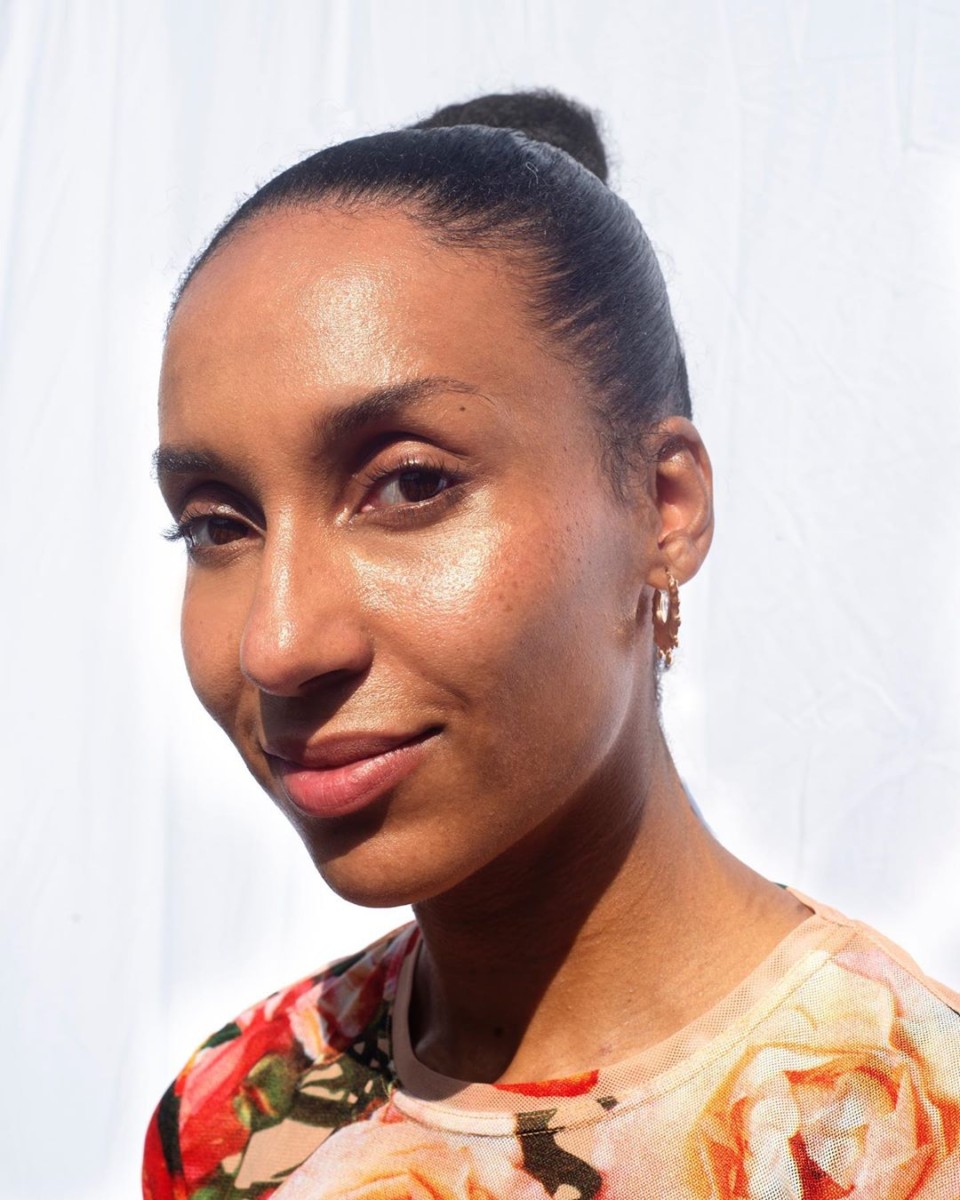 Emilia Petrarca, The Cut, New York magazine: Vogue.com Has a New Editor [Chioma Nnadi] (pictured)
Emilia Petrarca, The Cut, New York magazine: Vogue.com Has a New Editor [Chioma Nnadi] (pictured)
- Chris Roush, Talking Biz News: [Sudeep] Reddy becomes ME for policy at Politico
- Chris Roush, Talking Biz News: Business Insider/Insider hires [Fritzie] Andrade as ME for diversity, inclusion
- Savannah (Ga.) Business Journal: Ben Hart named President and General Manager of WJCL-TV
- Tegna: Richard Dyer Promoted to TEGNA Senior Vice President and Kate Morris Named President and General Manager at KPNX (Sept. 15)
- Washington Post: Elite Truong named director of strategic initiatives
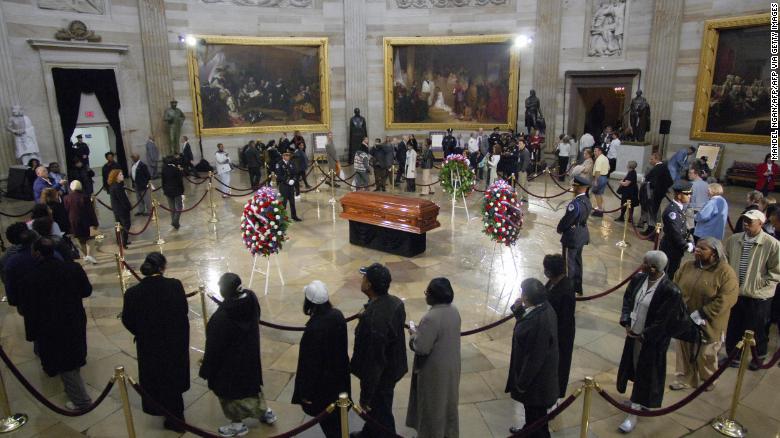
Parks Was First Woman to Lie in Honor in Capitol
The phrase was repeated in newspaper headlines, by network anchors and reporters in various media so often that it became a mantra: Ruth Bader Ginsburg was the first woman to lie in state at the U.S. Capitol — and isn’t it remarkable that it took this long?
But the body of civil rights icon Rosa Parks rested in the Capitol Rotunda as well, from Oct. 30 to Oct 31, 2005. The distinction between the appreciations accorded the two women is largely a question of semantics and title. Parks rested “in honor.”
According to the Architect of the Capitol, “The Rotunda of the U.S. Capitol has been considered the most suitable place for the nation to pay final tribute to its most eminent citizens by having their remains lay in state (in the case of government officials and military officers) or in honor (in the case of private citizens).”
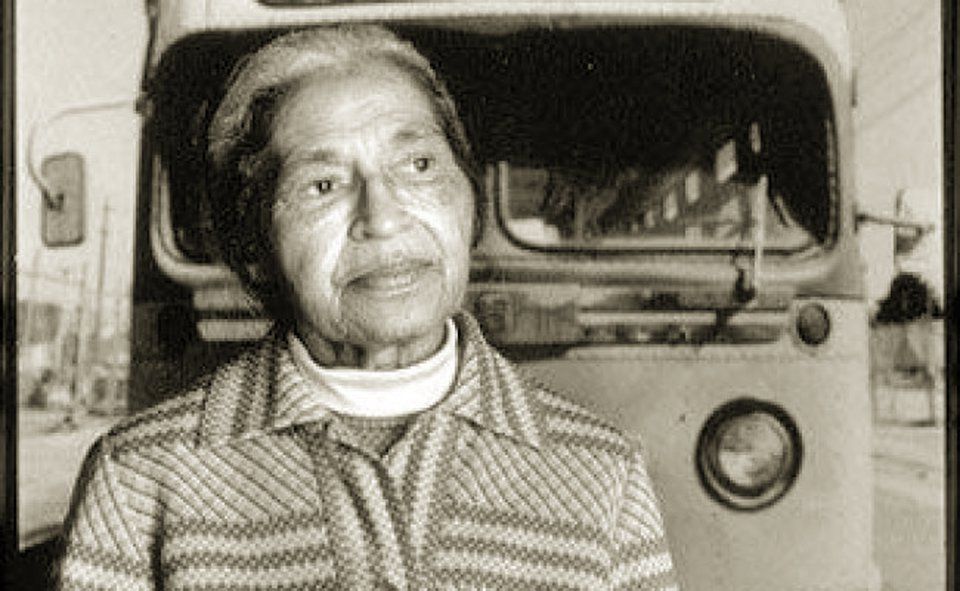 Parks (pictured)) was one of four private citizens given the honor. The others were Capitol Police officers Jacob Chestnut and John Gibson and evangelist Billy Graham. As with Ginsberg, networks carried services for Parks live. Morgan State University’s choir sang, “The Battle Hymn of the Republic” as Parks’ body was brought into the Rotunda.
Parks (pictured)) was one of four private citizens given the honor. The others were Capitol Police officers Jacob Chestnut and John Gibson and evangelist Billy Graham. As with Ginsberg, networks carried services for Parks live. Morgan State University’s choir sang, “The Battle Hymn of the Republic” as Parks’ body was brought into the Rotunda.
Thousands waited for five to six hours between the U.S. Capitol and the National Mall to view the casket.
Ken Thomas reported at the time for the Associated Press, “In most cases, only presidents, members of Congress and military commanders have been permitted to lie in the Rotunda.
“Parks would be the first woman and second black American to receive the accolade. Jacob J. Chestnut, one of two Capitol police officers fatally shot in 1998, was the first black American to lie in honor, said Senate historian Richard Baker.”
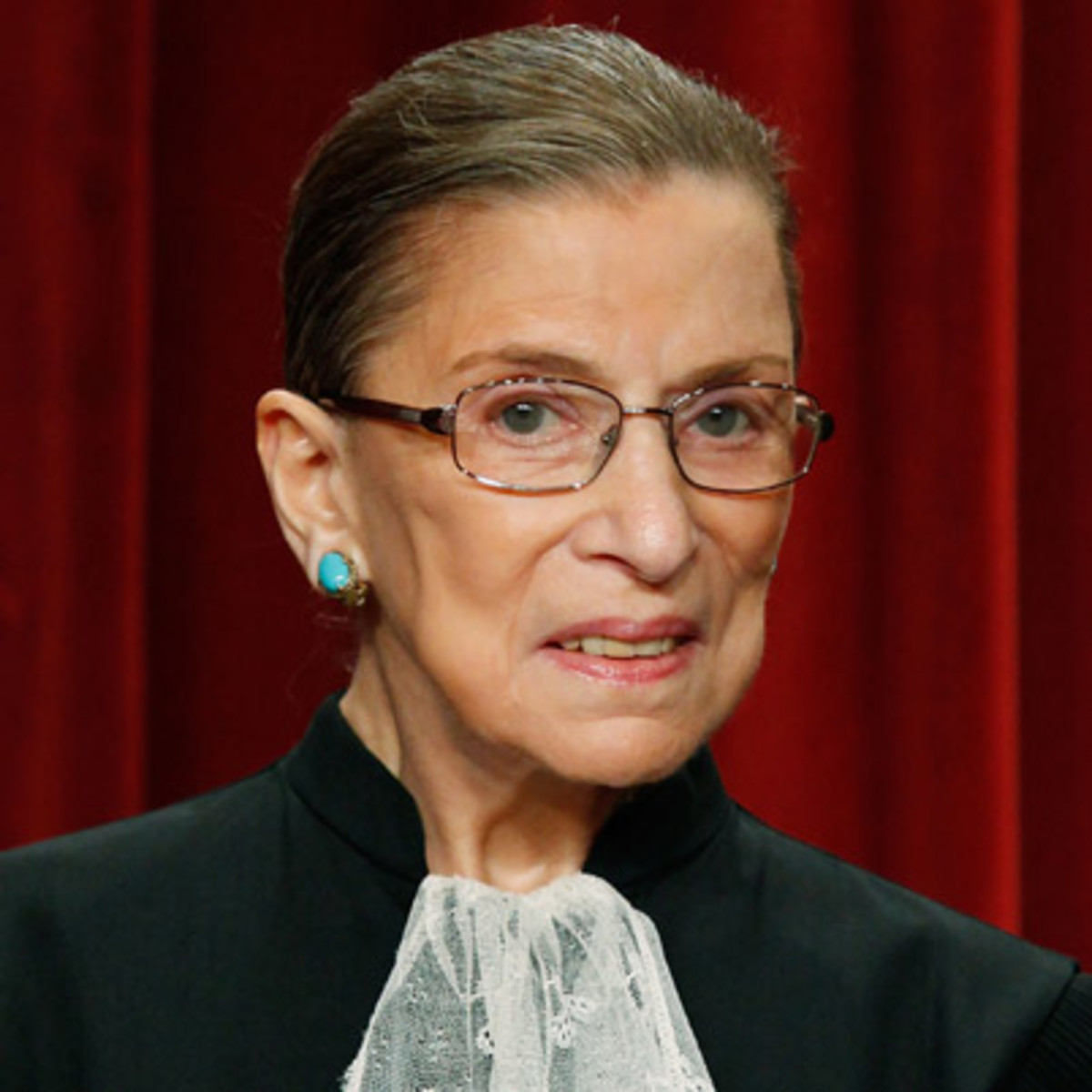 Stories about Justice Ginsburg (pictured), who died at 87 on Sept. 18, often compared her contribution to social justice with that of Justice Thurgood Marshall, who died in 1993.
Stories about Justice Ginsburg (pictured), who died at 87 on Sept. 18, often compared her contribution to social justice with that of Justice Thurgood Marshall, who died in 1993.
One prescient piece, by Dr. Adam Feldman on Aug. 10 on the blog empiricalscotus.com, was headlined, “RBG’s Departure Might Look A Lot Like Thurgood Marshall’s.”
As with the highly contested replacement of the liberal Marshall with the conservative Clarence Thomas, President Trump Saturday nominated conservative Judge Amy Coney Barrett of the Seventh U.S. Circuit Court of Appeals to Ginsburg’s seat.
- Gustavo Arellano, Los Angeles Times: Want to honor Justice Ruth Bader Ginsburg? Show up to vote Nov. 3
- Shree Baphna, AsAmNews: RBG and Me — The Implications for Women of Color (Sept. 19)
- Wayne Barrett, the Field Negro: It’s on! (Sept. 20)
- Charles M. Blow, New York Times: Conservatives Try to Lock In Power (Sept.20)
- Stacy M. Brown, National Newspaper Publishers Association: Justice Ginsburg’s Death Could Prove Fatal to American Democracy
- Stephen L. Carter, Bloomberg News: Let’s Appreciate Justice Ginsburg Before We Fight Over Replacing Her
- Suzanne Gamboa, NBC News: Latino voters, activists say Ginsburg replacement fight will rally Democrats, Republicans
- Emil Guillermo, Asian American Legal Defense and Education Fund: Every Asian American owes a debt to Ruth Bader Ginsburg
- Earl Ofari Hutchinson, the Hutchinson Report: Eight Very Specific Things Senate Democrats Can Do to Muck up Trump’s SCOTUS Bum Rush (Sept. 20)
- Jason Johnson, The Grio: Ruth Bader Ginsberg has died: 3 reasons Democrats shouldn’t panic … yet (Sept. 19)
- Tony Norman, Pittsburgh Post-Gazette: The moral vacancy of the Republican Party
- Clarence Page, Chicago Tribune: ‘Notorious RBG’ will be remembered for victories yet to come
- Madeline Peltz, Media Matters for America: Fox’s “straight news” coverage of Ruth Bader Ginsburg’s death was largely recycled right-wing talking points
- Raul A. Reyes, NBC News: A voice for the ‘excluded’ and ‘oppressed’: Latinos remember Justice Ruth Bader Ginsburg (Sept. 19)
- Eugene Robinson, Washington Post: Democrats, it’s time to get mad — and even
The Washington Post produced an “in-depth look at how Donald Trump and Joe Biden have approached criminal justice and race issues throughout their public lives.” (video) (Credit: JM Rieger/Washington Post)
‘Race and Violence in Our Cities’ — Really?
“The topics for the first presidential debate focus on issues that have dominated the news throughout 2020 — the economy, the coronavirus pandemic and the records of the two leading contenders,” Paul Farhi and Elahe Izadi reported Wednesday for the Washington Post.
“But the framing of one of the debate topics has set off alarms and objections.
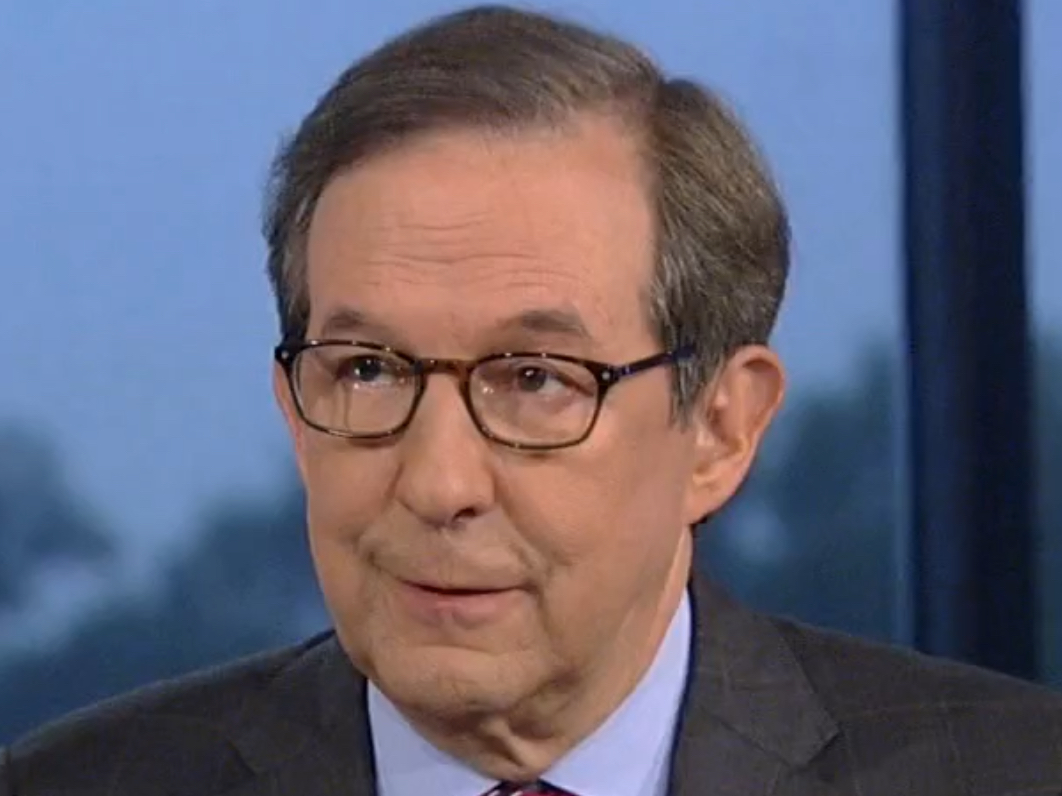 “ ‘Race and Violence in Our Cities’ — the title of one of the segments announced by moderator Chris Wallace (pictured) of Fox News on Tuesday — seems to echo President Trump’s contentious characterization of the protests that have swept American cities this summer and gives a false sense of the issue, critics say.
“ ‘Race and Violence in Our Cities’ — the title of one of the segments announced by moderator Chris Wallace (pictured) of Fox News on Tuesday — seems to echo President Trump’s contentious characterization of the protests that have swept American cities this summer and gives a false sense of the issue, critics say.
“Instead of alluding to the concerns about racial justice and police brutality that inspired the protests, liberal commentators and advocacy groups complained the phrasing suggests Trump’s framing of Black Lives Matter as an inherently violent movement. . . .”
Wallace has not responded to questions about the debate, which takes place on Tuesday.
- Francisco Alvarado, The Guardian: The fight for Florida’s Latino voters: Biden courts Puerto Ricans as Trump rallies Cubans
- Jenice Armstrong, Philadelphia Inquirer: Philly pastor nailed it when he asked Trump: ‘When has America been great for Black people in the ghettos of America?’ (Sept. 18)
- Asian and Pacific Islander American Vote (APAI Vote): 2020 Asian American Voter Survey (Sept. 15) (“Vietnamese Americans were the only Asian American group surveyed that leans more Republican [38% ] than Democrat [28%]”)
- Kelly Dittmar and Glynda C. Carr, Politico Magazine: Black Women Reach Record Numbers in Down-Ballot Races
- Barton Gellman, The Atlantic: The Election That Could Break America
- Bill Grueskin, Columbia Journalism Review: How can we stop Trump from using the debates to lie? (Sept. 17)
- Gabrielle Gurley, American Prospect: The Congressional Black Caucus: Necessary but Not Sufficient (Sept. 14)
- Cynthia Adina Kirkwood blog: Who Drank the Kool-Aid, President Trump
- Aamer Madhani, Associated Press: Trump expands ban on US money for certain diversity training
- Greg Miller, Washington Post: Allegations of racism have marked Trump’s presidency and become key issue as election nears
- Askia Muhammad, Washington Informer: Trump Has Perfected ‘How to Be White’ (Sept. 16)
- Syra Ortiz-Blanes and Alex Roarty, Miami Herald: Biden doesn’t have a problem with Hispanics — he has one with Hispanic men
- Donna M. Owens, Zora: Latinas Could Change the 2020 Election
- Donna M. Owens, Zora: The Political Power of Asian American Voters In 2020
- Donna M. Owens, Zora: Native American Voters Deserve to Have Their Voices Heard
- Deanna Pan and Dasia Moore, Boston Globe: A new survey says white support for Black Lives Matter has slipped. Some historians say they’re not surprised
- Ryan J. Reilly, HuffPost: How Segregationists Rushed Through The 1968 Rioting Laws DOJ Is Using In 2020
- Carmen Sesin, NBC News: Spanish-language disinformation intensifies among Florida Latinos, worrying Democrats (Sept. 18)
- Kimmy Yam, NBC News: 73% of young Asian American voters support Biden, but aren’t so amped about him, poll shows
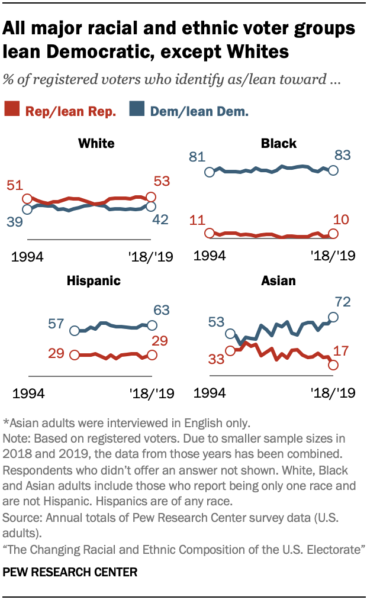
White Share of Eligible Voters Is Dropping
“In all 50 states, the share of non-Hispanic White eligible voters declined between 2000 and 2018, with 10 states experiencing double-digit drops in the share of White eligible voters,” Ruth Igielnik and Abby Budiman reported Wednesday for the Pew Research Center.
“During that same period, Hispanic voters have come to make up increasingly larger shares of the electorate in every state. These gains are particularly large in the Southwestern U.S., where states like Nevada, California and Texas have seen rapid growth in the Hispanic share of the electorate over an 18-year period. . . .
“These trends are also particularly notable in battleground states –- such as Florida and Arizona –- that are likely to be crucial in deciding the 2020 election. . . . In Florida, two-in-ten eligible voters in 2018 were Hispanic, nearly double the share in 2000. And in the emerging battleground state of Arizona, Hispanic adults made up about one-quarter (24%) of all eligible voters in 2018, up 8 percentage points since 2000. . . .”
More of Color Want News From Those Like Them
. . . Separately, Jeffrey Gottfried, Mason Walker and Amy Mitchell reported for Pew Aug. 31, “When asked whether six different aspects of personal connections between news organizations and their audiences are important in deciding where to get their news from, Black Americans are more likely than White Americans to say each is at least somewhat important.
“But two factors related to representation stand out: Nearly seven-in-ten Black adults (68%) say it is at least somewhat important that their news outlets cover people like them, 27 percentage points higher than White adults (41%) and 14 points above Hispanic adults (54%). And nearly four-in-ten Black Americans (38%), along with a third of Hispanic Americans (33%), think it is important for the journalists themselves at a news outlet to look or sound like them, compared with just 13% of White Americans who say the same.”
Nonprofit Newsrooms Lag on Inclusion
“The ranks of nonprofit newsrooms are growing as more founders choose community-supported models over dependence on advertising,” Sarah Scire wrote Tuesday for Nieman Lab. “But are nonprofit newsrooms reflecting the people they want to serve?
Referring to the Institute for Nonprofit News, Scire continued, “The INN Index surveyed 117 nonprofit news organizations — roughly half of the Institute for Nonprofit News’ membership — on the diversity of their staffs in 2019 and asked related questions about hiring practices and inclusion efforts. The report represents the broadest sampling of diversity, equity, and inclusion data in the sector to date. . . .”
“The timing is worth noting. Newsrooms responded in February and March 2020, a few months before protests over racial injustice and police brutality put internal discussions over diversity in coverage and representation in the spotlight at major outlets across the country. (Relatedly, newsrooms reported that ‘the most forceful advocacy for improving diversity comes from within their organization rather than from outside sources,’ according to INN.)
“Back in 2016, INN found only eight member organizations either led by people of color or serving communities of color out of more than 100 members. Three years later, with more than 285 members, INN found that ‘about 60’ are led by people of color and 30 are dedicated to covering underrepresented communities.
“Despite that upward trend, INN found the majority of respondents said their staff does not reflect the diversity of the communities they serve. . . .”
- Ivan Natividad, Berkeley News, UC Berkeley: In the fight for racial justice, Native stories should not be ignored
- Gabe Schneider and Marlee Baldridge, The Objective, Nieman Lab: Are news companies already putting diversity pledges on the back burner? (Sept. 17)
- Dale Willman, Columbia University: Journalism Needs More Diverse Voices (Sept. 11)

Diversity Program to Mentor H.S. Seniors
“We believe that America’s newsrooms should reflect the diversity of the communities that they cover. Unfortunately, that’s mostly not the case, and we at the Institute for Media and Public Trust are working with partner organizations to launch a program that will mentor young journalists of color,” Jim Boren, executive director of the Fresno State Institute for Media and Public Trust, wrote Thursday. Boren is former executive editor of The Fresno Bee.
“The goal is to increase the diversity in San Joaquin Valley newsrooms. We are particularly concerned with the under-representation of Black journalists in news media today, and it is time that this diversity challenge be rectified.
“Our program will offer a five-year paid pathway to a journalism degree, and ultimately employment at local media outlets. Each year, we will add a new class of students of color, building an ongoing pipeline of multi-media journalists to our region.
“We are working with the journalism programs at Fresno City College and Fresno State, and we are partnering with The kNOw Youth Media, which since 2006 has been helping young journalists with media training so they can tell stories about the communities they live in.
“Applications soon will be available for the program, and the first cohort of eight students will be chosen in October. Applicants must be high school seniors, and the goal is for them to stay with the program through college graduation. They will be paid $300 per month for nine months each academic year.”
- Joshua Benton, Nieman Lab: A new hotline promises answers to your race and gender questions — on deadline (Sept. 18)
- Hannah Burkhart, The Post, Ohio University: Scripps Latinx Network creates community, motivation for Latinx communication students
- Grace George, Current: Radio Milwaukee launches podcast about its city’s systemic racism
- Michael Malone, Broadcasting & Cable: Fox 29 [Philadelphia] Focused on Race
- Michigan State University College of Communication Arts and Sciences: Spartans Combat Bias in Reporting with ‘Sourcing for Diversity Project’ (Sept. 14)
- Spencer Nusbaum, Current: With podcast, ‘Black in Appalachia’ series aims to reach new audiences
- Penn State University: Alumni drive grassroots effort to bolster sports journalism diversity fund (Sept. 16)
- Reveal, Center for Investigative Reporting: The 2020-2021 Reveal Investigative Fellows
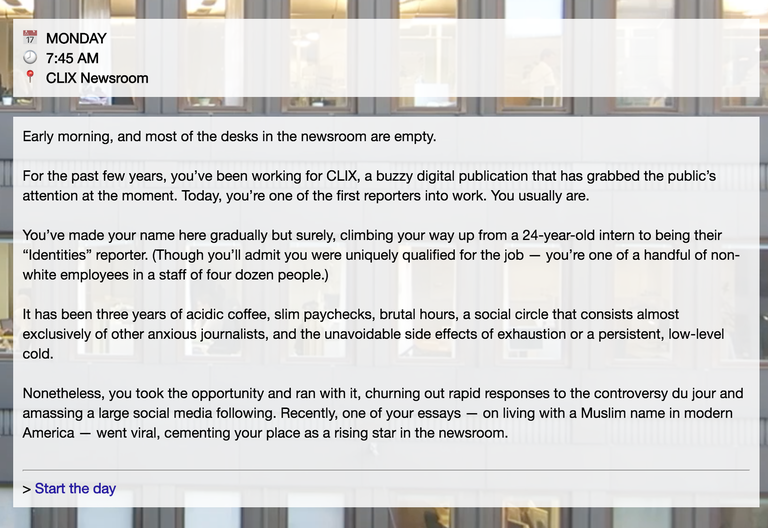
A Video Game on Plight of Journalists of Color
“Some video games invite us into fantastical worlds, where the villains breathe fire, cast mythical spells, or take to the skies in winged flight,” Adrienne Westenfeld wrote Friday for Esquire. “Other video games, like Off the Record, invite us to reconsider our own run-of-the-mill reality, where the villains are far more insidious — and can’t be neatly cut down by a mythical sword.
“In this incisive, choose-your-own-adventure game, your character is Z. Khan, the Identities Reporter at a buzzy digital publication called CLIX. After three years in the digital media trenches, you’re up for a promotion to managing editor — but before the powers that be can make you a formal offer, you’re heading off to a journalism conference, where you’ve been asked to sit on a diversity panel.
 “Your time at the conference illuminates the daily minefields that journalists of color must navigate on the job, from microaggressions in the newsroom to inappropriate comments from colleagues. In Z. Khan’s shoes, you’ll be told by your boss to be more ‘realistic’ about diversity initiatives, lectured by a colleague on how tiresome they find political correctness, and racially profiled at the door of the conference, among other brutal hurdles. . . .”
“Your time at the conference illuminates the daily minefields that journalists of color must navigate on the job, from microaggressions in the newsroom to inappropriate comments from colleagues. In Z. Khan’s shoes, you’ll be told by your boss to be more ‘realistic’ about diversity initiatives, lectured by a colleague on how tiresome they find political correctness, and racially profiled at the door of the conference, among other brutal hurdles. . . .”
The game’s creator is Farah Mohammed (pictured, above), an editor at Narratively and a freelance writer; “she left full-time employment in journalism to pursue a Masters of Mental Health at the University of Edinburgh, owing in part, she says, to the constant trauma she witnessed in the field of journalism. . . .”
Exit Leaves Tenn. Station With No Black Anchors
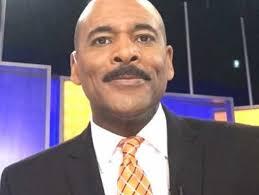 “Tom Randles (pictured) is out at News4, leaving WSMV with no anchors of color,” Brad Schmitt reported for the Tennessean in Nashville on Sept. 14, updated Sept. 18.
“Tom Randles (pictured) is out at News4, leaving WSMV with no anchors of color,” Brad Schmitt reported for the Tennessean in Nashville on Sept. 14, updated Sept. 18.
“Randles and station management said they couldn’t come to an agreement for a new contract, and his old contract expired Monday.
” ‘My contract expired hours ago without reaching another signed agreement,’ Randles posted on his Facebook page around 10 a.m. Monday. ‘So this is a bittersweet time.’
“Nearly 200 people commented on the Facebook page . . .
“In a text message exchange Monday night, Channel 4 news director Mitch Jacob said finding an anchor of color will be a priority for the station.”
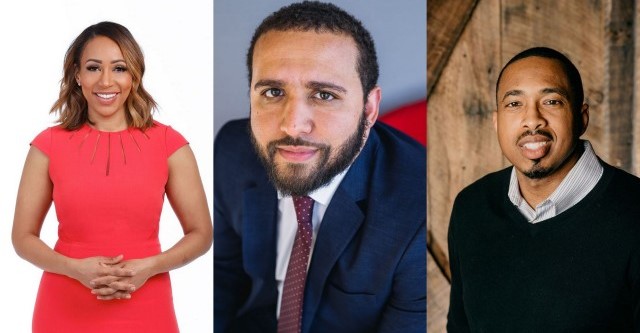
Journalists’ Podcast Focuses on Social Justice
“Four-time Emmy Award winning journalist Mara Schiavocampo, two-time Pulitzer Prize winner Wesley Lowery, and former magazine editor and sportswriter Keith Reed have announced the launch of a news and social justice podcast entitled Run Tell This,” the producers said in a news release Wednesday.
“The weekly podcast combines unimpeachable journalistic integrity with the life experience of being young and Black in America while providing a fresh and unvarnished analysis of the most important news and culture stories of the day.
“ ‘The news often feels like an overwhelming firehouse of information,’ says Wesley Lowery. ‘I’m looking forward to getting together once a week with smart friends to talk through the headlines and make sense of the chaos.’
“Run Tell This will also welcome guests from the worlds of journalism, politics, sports, entertainment, and law. The premier episode takes an in-depth look at Louisville, Kentucky bracing for a grand jury decision about the cops who killed Breonna Taylor. The first guest is veteran journalist and media strategist Goldie Taylor and upcoming guests include Soledad O’Brien among others.”
Short Takes
- At a House Judiciary Committee hearing on “Diversity in America: The Representation of People of Color in the Media,” sports commentator Jason Whitlock said in prepared remarks [PDF], “As it relates to the mainstream media, the diversity we’re lacking right now isn’t racial. We lack the resolve to follow the truth wherever it leads. Big Tech eliminated the search for truth. Big Tech installed athletes, celebrities and rigged algorithms as journalists. The media has always leaned left. It’s the disregard for truth that is killing America. No truth no justice.”
- Investigative Reporters and Editors closed its virtual conference on Friday with several sessions touching on diversity and inclusion. The conference received scant news coverage, save for an appearance by Bob Woodward and a rebuke to the city of Detroit over government secrecy. “IRE does not provide press passes or seats to cover our national conferences,” Executive Director Doug Haddix messaged Journal-isms last week. “Our conferences aren’t open press events.” The conference attracted more than 2,900 attendees, Haddix said Sunday. “This will be the largest conference in IRE history,” he had said. “Previous record: 1,985 attendees in Houston in 2019.”
- “A KPCC reporter who was slammed to the ground and accused of interfering with an arrest the night two Los Angeles County sheriff’s deputies were shot in Compton will not face criminal charges, the Los Angeles County district attorney’s office said Thursday,” James Queally reported for the Los Angeles Times. “Josie Huang, 39, was arrested outside St. Francis Hospital in Lynwood after deputies alleged she tried to interfere with the arrest of a protester earlier this month. The incident drew widespread condemnation from journalism organizations and politicians, criticism that worsened after video of the incident captured on Huang’s cellphone seemingly disproved allegations levied by Sheriff Alex Villanueva. . . .”
- “A September 11 appeals court ruling allowed Florida to bar hundreds of thousands of residents with former felony convictions from registering to vote if they owe money as a part of their sentences,” Zachary Pleat reported Tuesday for Media Matters for America. “Over the following six days, news coverage by TV stations in Florida’s markets mostly failed to explain that the state is making it nearly impossible for these residents — who are disproportionately Black — to find out how much money they owe, effectively barring them from voting forever even though Floridians overwhelmingly approved a constitutional amendment to reinstate their voting rights.”
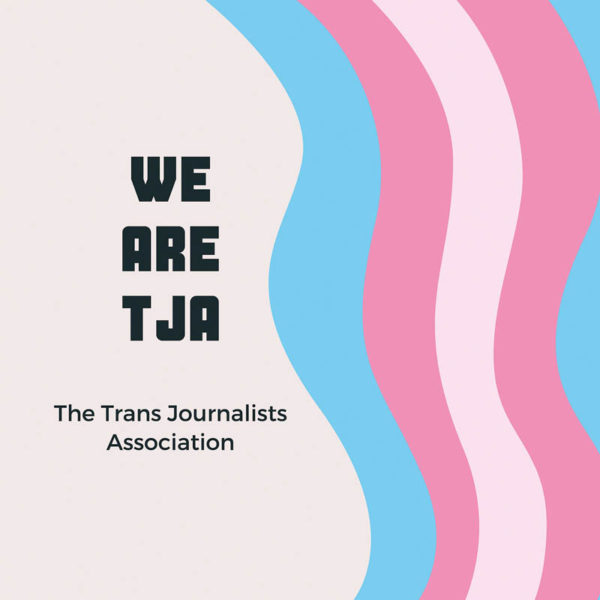
- “On June 30 — the last day of Pride Month — a group of nearly 50 journalists launched the Trans Journalists Association (TJA),” Evelyn Mateos reported Sept. 17 for Editor & Publisher. “The organization offers support for trans journalists in their workplaces and careers through community support. In addition, they provide guidance for more accurate coverage of trans communities and tools to help employers make the newsroom more supportive for trans employees. . . .”
- The Root 100, the website’s annual list of the most influential African Americans aged 25 to 45, includes media figures Nikole Hannah-Jones of the New York Times Magazine and its 1619 Project; Yamiche Alcindor, White House correspondent for the “PBS NewsHour”; Tiffany D. Cross, political analyst and author; Lindsay Peoples Wagner, editor-in-chief of Teen Vogue; LGBTQ journalist Tre’vell Anderson; Erica Lovett, director of inclusion and diversity at Condé Nast; Trymaine Lee, MSNBC journalist; and David Dennis Jr., writer and cultural critic.
- “Variety parent company Penske Media Corp. has set a deal with MRC to operate Billboard, Vibe and the Hollywood Reporter under a newly formed joint venture, Variety reported Wednesday. Keith J. Kelly added Thursday in the New York Post, “The editorial side is expected to come through relatively unscathed, however, with Hannah Karp remaining as editorial director of Billboard, Nekesa Mumbi Moody staying on as editor-in-chief at THR and Datwon Thomas remaining at the editorial helm of Vibe. Even Claudia Eller — the Variety editor-in-chief who was forced to take a leave of absence in June after a column on the lack of racial diversity at the mag ignited a Twitter storm — might stay on. Sources close to the company say she has been undergoing diversity training and counseling . . . .”
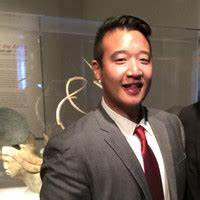 “Emmy-nominated actress Lucy Liu has signed on to star in the upcoming dramatic feature Rosemead directed by Eric Lin,” Dino-Ray Ramos wrote Sept. 9 for Deadline. “Marilyn Fu (The Honor List, The Sisterhood of Night, Amazon Studios’s upcoming adaptation of 500 Words or Less) wrote the screenplay based on the award-winning Los Angeles Times article ‘A Dying Mother’s Plan‘ written by Frank Shyong (pictured).
“Emmy-nominated actress Lucy Liu has signed on to star in the upcoming dramatic feature Rosemead directed by Eric Lin,” Dino-Ray Ramos wrote Sept. 9 for Deadline. “Marilyn Fu (The Honor List, The Sisterhood of Night, Amazon Studios’s upcoming adaptation of 500 Words or Less) wrote the screenplay based on the award-winning Los Angeles Times article ‘A Dying Mother’s Plan‘ written by Frank Shyong (pictured).
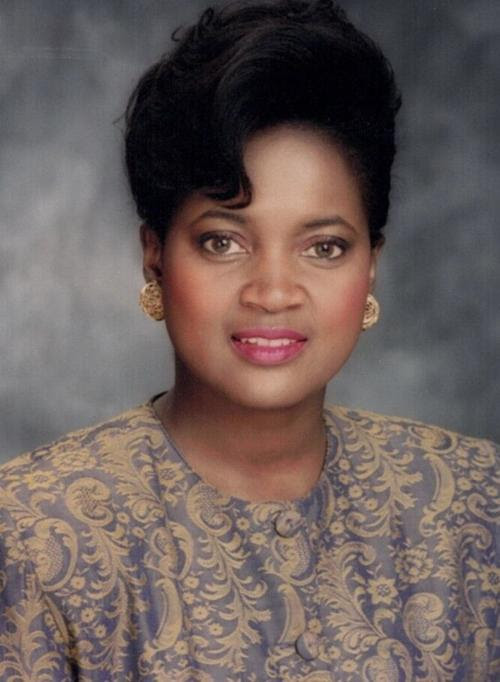 “Jean Hill, (pictured) a familiar face to Channel 7 viewers for more than a decade, died of cancer [Sept. 13] at Roswell Park Comprehensive Cancer Institute,” WKBW-TV in Buffalo, N.Y., reported Sept. 16. It also said, “Jean joined WKBW in 1990 after stops at television stations in Georgia and South Carolina. But Buffalo is where she would put down roots and call home. She spent 12 years at 7 Broadcast Plaza, serving as weekend anchor, morning anchor and reporter. In 2001, Hill embarked on a new chapter in life, joining Buffalo-based M&T Bank as a vice president for corporate communications. She earned her Executive MBA from the University at Buffalo School of Management in 2004. The Buffalo News added, “Ms. Hill was often the only minority on-air person at her station. . . .” Her age was not reported.
“Jean Hill, (pictured) a familiar face to Channel 7 viewers for more than a decade, died of cancer [Sept. 13] at Roswell Park Comprehensive Cancer Institute,” WKBW-TV in Buffalo, N.Y., reported Sept. 16. It also said, “Jean joined WKBW in 1990 after stops at television stations in Georgia and South Carolina. But Buffalo is where she would put down roots and call home. She spent 12 years at 7 Broadcast Plaza, serving as weekend anchor, morning anchor and reporter. In 2001, Hill embarked on a new chapter in life, joining Buffalo-based M&T Bank as a vice president for corporate communications. She earned her Executive MBA from the University at Buffalo School of Management in 2004. The Buffalo News added, “Ms. Hill was often the only minority on-air person at her station. . . .” Her age was not reported.
- “It seems that this past year has been a terrible one filled with the loss of some great American journalists and journalism professors, Native and Non-Native,” Tim Giago wrote Monday for indianz.com. Giago stretched “this past year” to include those who died in 2018 and 2019: Professors Bill Dulaney of Penn State University [who died in 2019] and Dick Lee [2018] of the South Dakota State University School of Journalism.; reporters Adrian Louis [2018], Jerry Reynolds [2019] and Tom Beaver [2020]; Harriet Skye, the first Native American to host a weekly television show in North Dakota [who died in 2018]. He also cited Chuck Trimble, a Lakota journalist who founded the first Native journalist association, American Indian Press Association., in the early 1970s. His death was reported in March.
- Veronica Molina has been promoted from vice president, standards and practices at CNN to senior vice president, standards and practices, CNN confirmed. (Added Sept. 28)
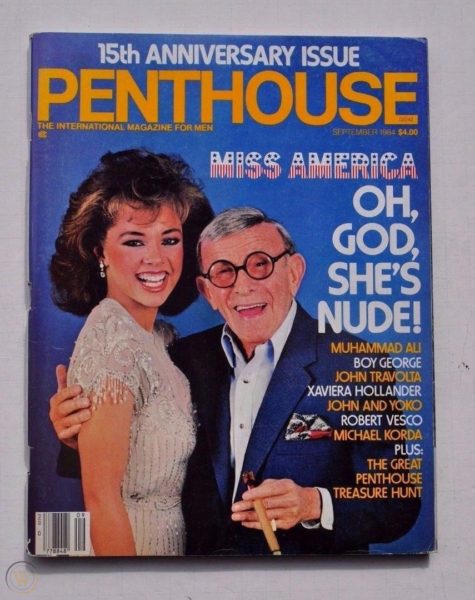
- Esquire magazine recaps the story of the September 1984 issue of Penthouse, which became its best-selling issue ever by publishing nude photos of Vanessa Williams, the then-reigning, and first Black, Miss America. Peter Bloch, Penthouse’s executive editor at the time, says, “there were guys paying — and this is something I saw with my own eyes — a dollar for a peek. A peek!” Williams resigned as Miss America but became a successful singer and actress.
- The Pulitzer Center has joined with 18 other news organizations, including the National Association of Hispanic Journalists and Native American Journalists Association, in support of the “Future of Local News Commission” Act, which would establish a commission to “study the state of local news and its ability to sustain democracy by informing the American public about critical issues,” Jeff Barrus reported Thursday for the center.
- “Esteban Creste, VP and news director at Univision’s New York station WXTV, is taking a well-earned victory lap,” the subscription-only NewsBlues site reported Sept. 15. “The station’s late news, Solo a las Once (Only at Eleven), won the July sweep in Adults 18-49 and came in second in Adults 25-54 — that’s against all New York stations, regardless of language. ‘It’s not only that we’re number one,’ Creste says, ‘it’s number one during these times that people are desperate for information.’ . . .”
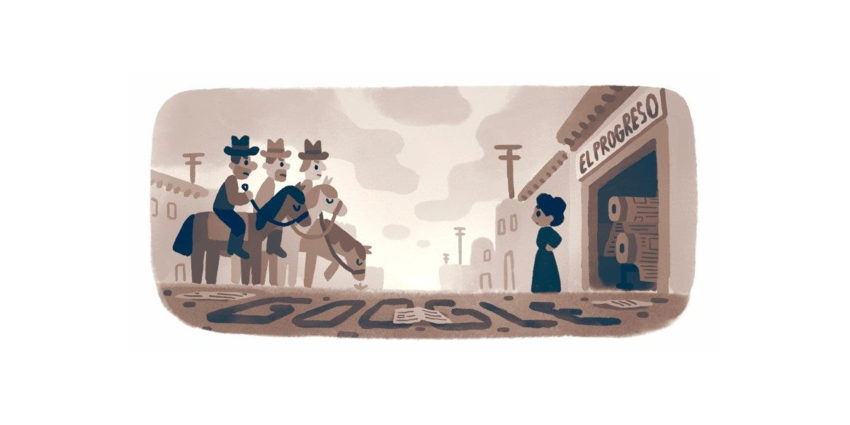
- The Google Doodle for Sept. 20 honored Jovita Idár, a Mexican-American journalist and civil rights activist.” In 1914, El Progreso published an editorial opposing President Woodrow Wilson’s deployment of troops to the U.S.-Mexico border. In response to that article, a group of Texas Rangers sought to ransack the newspaper’s office, but Jovita Idár stood boldly at the entrance, keeping the attackers at bay,” Kyle Brashaw wrote. “Sadly, the Rangers later returned on a day when Idár wasn’t there and finished the job, destroying the El Progreso printing presses and office. Jovita Idár’s life and legacy was also recently retold by The New York Times as part of a series of ‘overlooked’ individuals who didn’t originally get an obituary published.”
- “Will the truth set her free? Sunny Hostin had to lawyer up when network executives tried to force her into changing the facts in her new book, ironically titled ‘I Am These Truths,‘ ” Karu F. Daniels reported Monday for the Daily News in New York. “In the foreword of the memoir – which will be released Tuesday via HarperCollins – ‘The View’ co-host revealed how ABC News tried and failed to have her ‘remove passages from the book.” Daniels also wrote, ” ‘But then they wanted me to change, things like things that I experienced discriminatory things, you know, and I just felt that that wasn’t fair because the title of the book is ‘”I Am These Truths’’ ‘. . . .”
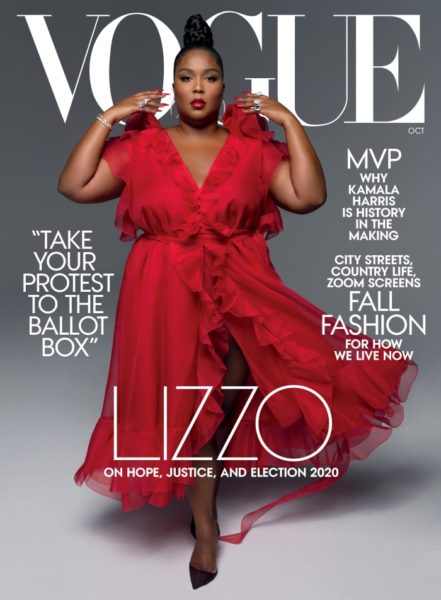
- “I am the first big black woman on the cover of @voguemagazine,” the singer Lizzo wrote Thursday on Instagram. “The first black anything feels overdue. But our time has come. To all my black girls, if someone like you hasn’t done it yet— BE THE FIRST. . . .” Keydra Manns added on The Grio, “The 32-year-old sensation sat down with poet Claudia Rankine who’s interviewed the singer a couple of times before she wrote Vogue’s October cover story. The women dished on an array of topics like how Lizzo feels about being in quarantine and why she no longer wants to be considered, ‘body-positive.’ . . .”
- “Ellis Haizlip was a trailblazer in the world of TV, pioneering the way with ‘Soul!,’ a TV show that devoted itself to the African American experience, showcasing music, poetry and highlighting Black talent from 1968-1973 against the backdrop of a changing America and white establishment that was TV,” Jazz Tangcay reported Wednesday for Variety. Tangcay also wrote, “The new documentary, ‘Mr. SOUL!’ (streaming on virtual cinema) showcases his story and offers highlights from the show, reminding the world of his legacy. Director and Haizlip’s niece, Melissa Haizlip celebrates what would have been his 90th birthday, speaking with Variety about how she and DP Hans Charles collaborated to bring this story to a new generation. . . .”
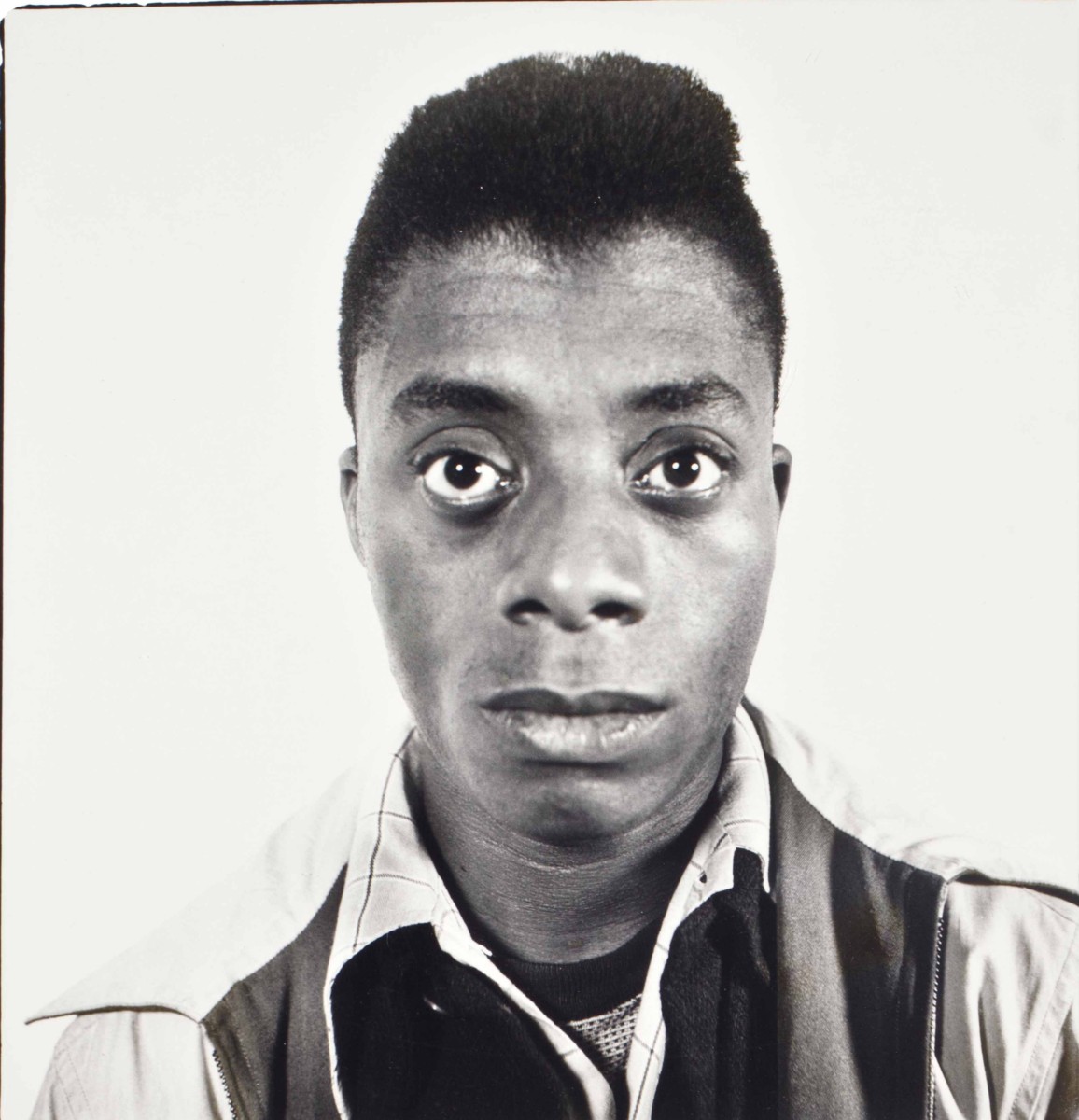 “James Baldwin’s (pictured in 1963 portrait by Richard Avedon) first biographer was my aunt Fern Marja Eckman, a prize-winning feature writer and reporter for the New York Post,” Leslie J. Freeman wrote Tuesday for The New Yorker. “She died in 2019, at the age of a hundred and three. As her closest living relative, I cleaned out her apartment. Hidden in a concealed drawer of an old mahogany desk, I found transcripts of interviews that she had conducted with Baldwin. Some of that material was included in her book, ‘The Furious Passage of James Baldwin,’ which was published, in 1966, by M. Evans & Company. It is especially interesting to read the carefully typed transcripts of their conversations in light of our current moment. With the encouragement of Eddie S. Glaude, Jr., the chair of the department of African-American studies at Princeton University and the author of a current best-seller on Baldwin, ‘Begin Again,’ I am making more of this interview material public. . . .”
“James Baldwin’s (pictured in 1963 portrait by Richard Avedon) first biographer was my aunt Fern Marja Eckman, a prize-winning feature writer and reporter for the New York Post,” Leslie J. Freeman wrote Tuesday for The New Yorker. “She died in 2019, at the age of a hundred and three. As her closest living relative, I cleaned out her apartment. Hidden in a concealed drawer of an old mahogany desk, I found transcripts of interviews that she had conducted with Baldwin. Some of that material was included in her book, ‘The Furious Passage of James Baldwin,’ which was published, in 1966, by M. Evans & Company. It is especially interesting to read the carefully typed transcripts of their conversations in light of our current moment. With the encouragement of Eddie S. Glaude, Jr., the chair of the department of African-American studies at Princeton University and the author of a current best-seller on Baldwin, ‘Begin Again,’ I am making more of this interview material public. . . .”
- “American Public Media Group CEO Jon McTaggart announced Tuesday he will step down from his position following pressure from employees and listeners who are asking the company to step up its racial and gender equity,” Ross Raihala reported for the Pioneer Press in St. Paul, Minn. “Earlier in the day, a group of unnamed employees of Minnesota Public Radio and its parent company, APM, launched a website, transformmpr.org, where they shared a list of demands ‘to improve our company culture and our news coverage.’ McTaggart, who is one of the highest-paid public media CEOs in the country, responded with an email, co-signed by board Chair Mary Brainerd, sent to APM and MPR employees. . . .”
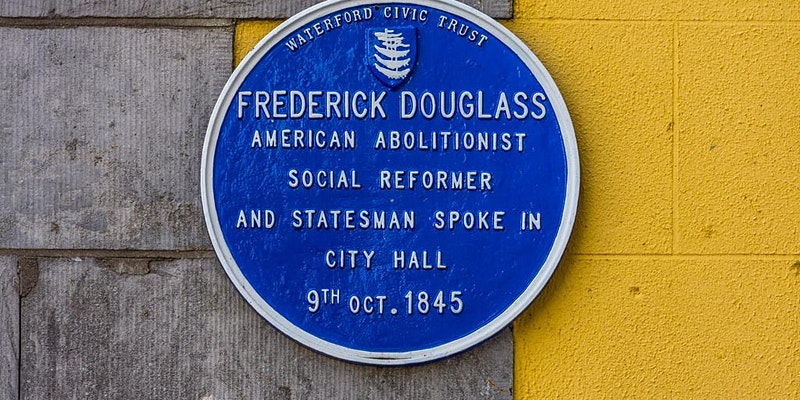
- The ties that abolitionist Frederick Douglass, publisher of The North Star, made with Ireland aren’t well known, but then-President Barack Obama paid tribute to them in a little-covered trip to Ireland in 2011. On Tuesday at 5 p.m. EDT, New York University is hosting a virtual “conversation about history, solidarity, and racial justice in Ireland and the US.” American and Irish scholars are to participate. Obama said on his trip, “When we strove to blot out the stain of slavery and advance the rights of man, we found common cause with your struggles against oppression. Frederick Douglass, an escaped slave and our great abolitionist, forged an unlikely friendship right here in Dublin with your great liberator, Daniel O’Connell. His time here, Frederick Douglass said, defined him not as a color but as a man. And it strengthened the non-violent campaign he would return home to wage.”
- “Decades after many governments across the continent loosened control over broadcasters and publishers, the media industry is under threat,” South Africa’s Legalbrief reported Monday. “The Journal of Democracy has noted that new laws are resulting in the imprisonment of journalists and closure of media houses, while internet shutdowns and ‘social-media taxes’ are increasingly common strategies to limit the mobilising and informational potentials of digital technologies.”
- “Liberian authorities should credibly investigate the attack on journalist Amos Omaska Jallah and ensure those responsible are held to account,” the Committee to Protect Journalists said Sept. 18. “On September 13, in Latia, a town in Liberia’s western Cape Mount county, a group of at least 30 men attacked Jallah, a senior reporter with the privately owned The News newspaper, while he was covering a voter registration program, the journalist told CPJ by messaging app. Jallah said he filmed the group of men [arriving] in the town, where they tried to register to vote ahead of Liberia’s December 8 senatorial elections, and clashed with locals who attempted to stop them from registering illegally. Jallah said the group then turned on him. . . .”
- “President Cyril Ramaphosa has paid tribute to the South African media for its in-depth coverage of the Coronavirus pandemic, despite the industry itself being confronted by daunting challenges,” the South African Government News Agency reported Sept. 14. “Tenacious journalists, he said, have worked hard to keep the nation abreast with the latest developments, and disseminating key health messages about social distancing and hygiene. They have done so under extremely trying conditions, often with limited resources. They have told the stories of the effects of lockdown on the lives of people and their businesses. They have been out in the villages, towns and cities, bringing stories of ordinary people and drawing national attention to problems experienced in hospitals and clinics, prompting government action,” the president said. “Chin’ono and opposition leader Jacob Ngarivhume were imprisoned for 45 days, pre-trial, and released on bail on September 2nd.“
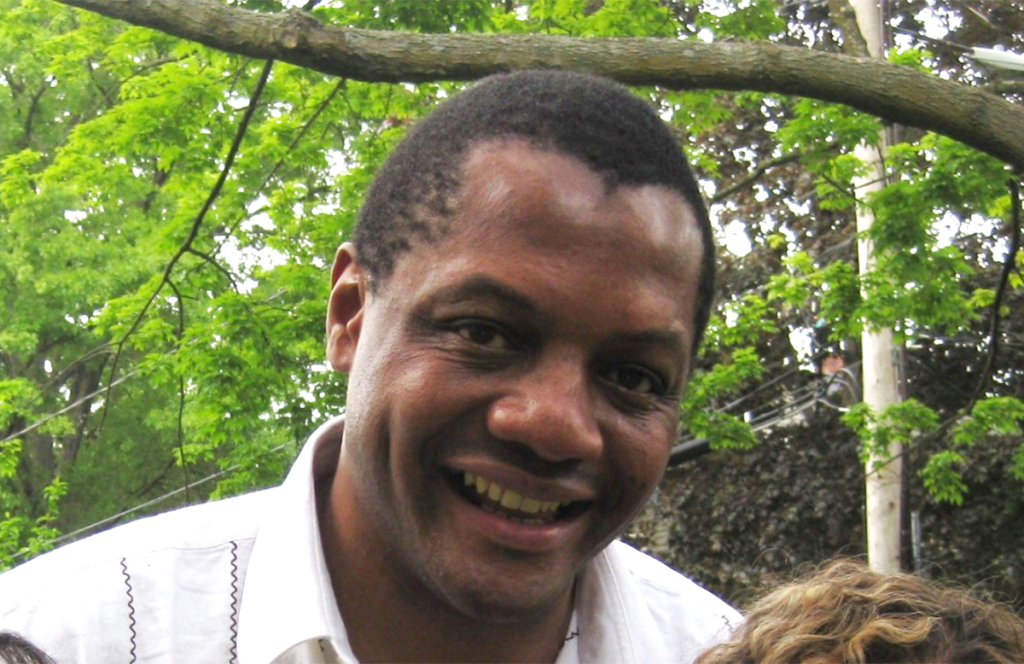 “When Zimbabwean journalist and 2010 Nieman Fellow Hopewell Chin’ono (pictured, by Nieman Class of 2010) started speaking out against corruption in the government, using his Facebook and Twitter accounts as primary channels, he knew the precedent of journalists before him who had been arrested and harassed for taking a stand,” Fungai Tichawangana wrote Thursday for Nieman Reports. Tichawangana also wrote, “But he continued to reveal stories of corruption, including the looting of funds meant for Covid-19 relief. This story led to the firing and arrest of the Zimbabwean Health Minister, Obadiah Moyo, but implicated the president’s son, which is what Chin’ono suspects led to his own arrest.. .” Tichawangana interviewed Chin’ono. “Chin’ono and opposition leader Jacob Ngarivhume were imprisoned for 45 days, pre-trial, and released on bail on September 2nd.”
“When Zimbabwean journalist and 2010 Nieman Fellow Hopewell Chin’ono (pictured, by Nieman Class of 2010) started speaking out against corruption in the government, using his Facebook and Twitter accounts as primary channels, he knew the precedent of journalists before him who had been arrested and harassed for taking a stand,” Fungai Tichawangana wrote Thursday for Nieman Reports. Tichawangana also wrote, “But he continued to reveal stories of corruption, including the looting of funds meant for Covid-19 relief. This story led to the firing and arrest of the Zimbabwean Health Minister, Obadiah Moyo, but implicated the president’s son, which is what Chin’ono suspects led to his own arrest.. .” Tichawangana interviewed Chin’ono. “Chin’ono and opposition leader Jacob Ngarivhume were imprisoned for 45 days, pre-trial, and released on bail on September 2nd.”
To subscribe at no cost, please send an email to journal-isms-subscribe@yahoogroups.com and say who you are.
Facebook users: “Like” “Richard Prince’s Journal-isms” on Facebook.
Follow Richard Prince on Twitter @princeeditor
Richard Prince’s Journal-isms originates from Washington. It began in print before most of us knew what the internet was, and it would like to be referred to as a “column.” Any views expressed in the column are those of the person or organization quoted and not those of any other entity. Send tips, comments and concerns to Richard Prince at journal-isms-owner@yahoogroups.com
View previous columns (after Feb. 13, 2016).
- Diversity’s Greatest Hits, 2018 (Jan. 4, 2019)
- Book Notes: Is Taking a Knee Really All That? (Dec. 20, 2018)
- Book Notes: Challenging ’45’ and Proudly Telling the Story (Dec. 18, 2018)
- Book Notes: Get Down With the Legends! (Dec. 11, 2018)
- Journalist Richard Prince w/Joe Madison (Sirius XM, April 18, 2018) (podcast)
- Richard Prince (journalist) (Wikipedia entry)
- February 2018 Podcast: Richard “Dick” Prince on the need for newsroom diversity (Gabriel Greschler, Student Press Law Center, Feb. 26, 2018)
- Diversity’s Greatest Hits, 2017 — Where Will They Take Us in the Year Ahead?
- Book Notes: Best Sellers, Uncovered Treasures, Overlooked History (Dec. 19, 2017)
- An advocate for diversity in the media is still pressing for representation, (Courtland Milloy, Washington Post, Nov. 28, 2017)
- Morgan Global Journalism Review: Journal-isms Journeys On (Aug. 31, 2017)
- Diversity’s Greatest Hits, 2016
- Book Notes: 16 Writers Dish About ‘Chelle,’ the First Lady
- Book Notes: From Coretta to Barack, and in Search of the Godfather
- Journal-isms’ Richard Prince Wants Your Ideas (FishbowlDC, Feb. 26, 2016)
- “JOURNAL-ISMS” IS LATEST TO BEAR BRUNT OF INDUSTRY’S ECONOMIC WOES (Feb. 19, 2016)
- Richard Prince with Charlayne Hunter-Gault,“PBS NewsHour,” “What stagnant diversity means for America’s newsrooms” (Dec. 15, 2015)
- Book Notes: Journalists Follow Their Passions
- Book Notes: Journalists Who Rocked Their World
- Book Notes: Hands Up! Read This!
- Book Notes: New Cosby Bio Looks Like a Best-Seller
- Journo-diversity advocate turns attention to Ezra Klein project (Erik Wemple, Washington Post, March 5, 2014)
.

